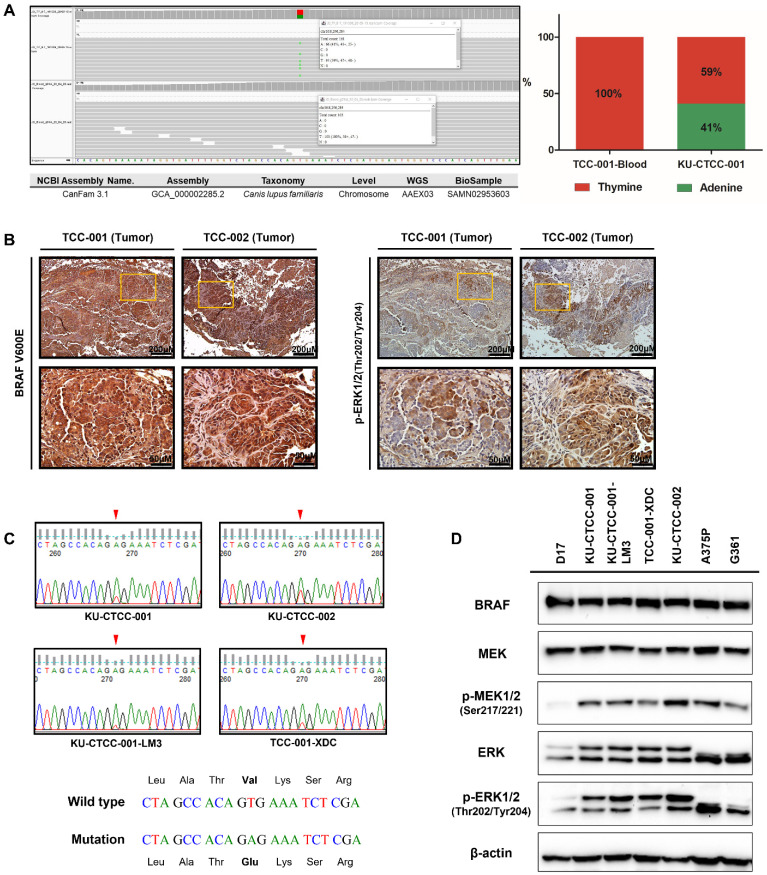Figure 2.
Detection of BRAF V595E mutations and MAPK pathway activation. (A) Somatic variant-calling results of the BRAF gene in KU-CTCC-001. In contrast to the blood results, KU-CTCC-001 cells showed heterozygous mutations. Wild-type (thymine) reads were mapped to the reference sequence more than mutant (adenine) reads. The ratio of wild-type to mutants was 59:41. (B) Immunohistochemical (IHC) staining of BRAF mutations and phosphorylated ERK1/2 protein. Tumor tissues were strongly stained with anti-BRAF V600E antibody, suggesting the presence of V595E mutations. Phosphorylated ERK1/2 protein was also highly expressed in the tumor tissues. (C) Detection of BRAF V595E mutations by Sanger sequencing. Heterozygous mutations were confirmed not only in KU-CTCC-001 cell lines but also in the other cell lines. Furthermore, tumor-dissociated cells derived from the xenograft mouse model injected with KU-CTCC-001 cells (TCC-001-XDC) showed a similar ratio of wild-type to mutants as the original cell line (KU-CTCC-001). (D) MAPK pathway activation at the protein level. The expression of phosphorylated MEK1/2 protein and phosphorylated ERK1/2 protein was similar to that of human BRAF V600E mutant cell lines (A375P and G361) and higher than that of the D17 cell line.

